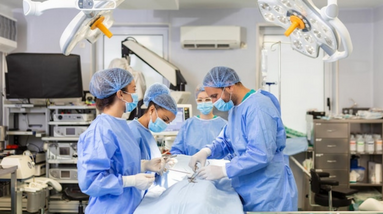
Coronary bypass surgery, also known as coronary artery bypass graft (CABG) surgery, is a surgical procedure that’s performed to treat coronary artery disease, which occurs when the arteries that supply blood to the heart become narrowed or blocked.
During the surgery, a surgeon takes a healthy blood vessel from another part of the body, such as the chest, leg, or arm, and uses it to create a detour or “bypass” around the blocked or narrowed section of the coronary artery. This allows blood to flow more freely to the heart muscle, improving blood supply to the heart and reducing symptoms such as chest pain (angina).
CABG surgery is typically performed under general anesthesia, and the patient is connected to a heart-lung machine that takes over the function of the heart and lungs during the procedure. The surgery can be performed through a traditional “open” approach, in which the chest is opened with a large incision, or through a minimally invasive approach that involves smaller incisions.
After the surgery, patients are typically monitored in the intensive care unit (ICU) for a period of time and then transferred to a regular hospital room. Recovery time varies depending on the individual patient and the specific type of procedure performed, but most people are able to return to their normal activities within a few weeks to a few months after surgery.
CABG surgery can be an effective treatment for coronary artery disease, but it’s important to discuss the risks and benefits of the procedure with your doctor to determine if it’s the right treatment option for you.